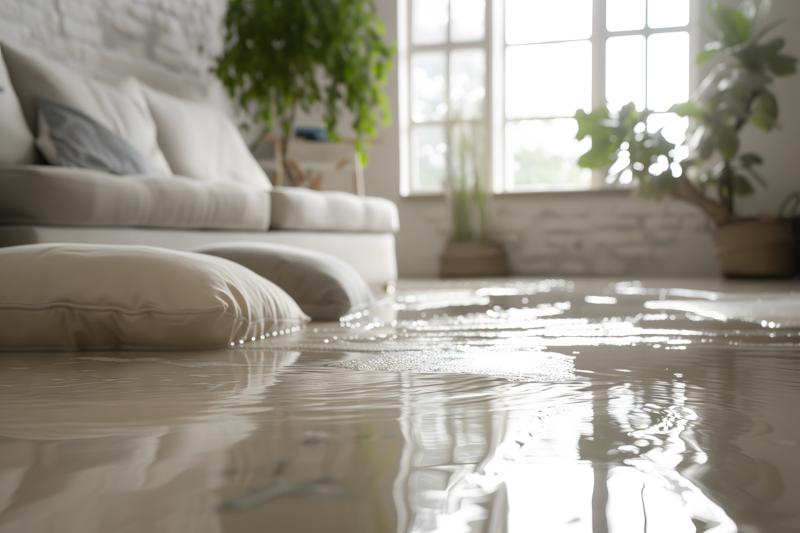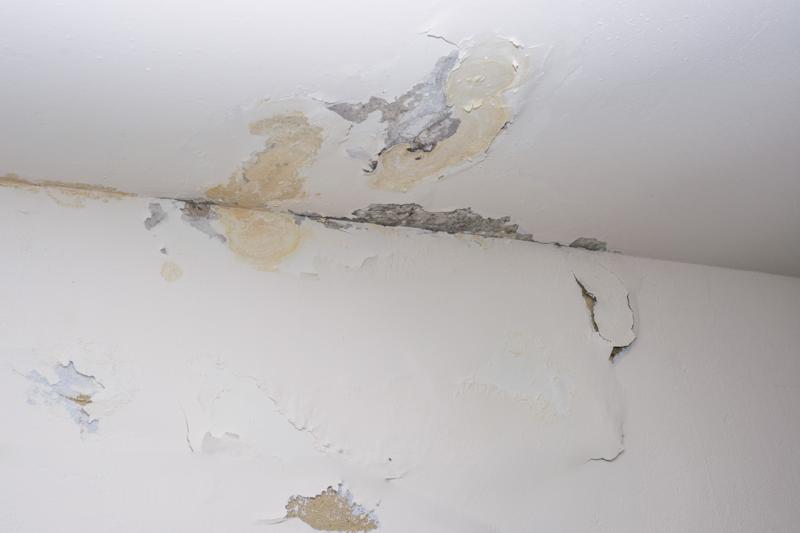Best Practices for Water Damage in Cleveland, TN

Water damage is one of the most disruptive challenges for property owners in Cleveland, TN. Water intrusion can lead to structural deterioration and mold growth, compromising safety and home value. This article reviews common causes of water damage in the Cleveland area, offers prevention strategies, and outlines immediate remedial actions for emergencies. In addition, professional restoration options and long-term solutions are discussed to help homeowners safeguard their properties and mitigate water-related issues effectively.
The following sections detail the principal causes of water damage, key prevention measures, immediate action steps, professional restoration services, long-term solutions, and emergency planning. Each section provides actionable insights and expert recommendations to help you prepare and respond to water damage.
Transitioning now to a detailed exploration, the next section addresses the most common causes of water damage in Cleveland, TN.
Understand Common Causes of Water Damage in Cleveland, TN
Water damage in Cleveland, TN, is often caused by factors such as natural weather patterns, aging infrastructure, and poor maintenance practices. Intrusion from rain, melting snow, or plumbing failures may compromise building materials. Residential properties are particularly vulnerable because of seasonal climate fluctuations and heavy precipitation events.
Identify Seasonal Trends Impacting Water Damage Risks
Seasonal trends greatly affect water damage risks. In winter, ice buildup and snowmelt can cause water accumulation around foundations. Spring rains may lead to flooding and increased surface water intrusion, while summer storms with heavy downpours can result in roof and window seepage if gutters or downspouts are obstructed. These variations underscore the need for proactive maintenance and regular repairs to protect structures and reduce costly fixes later on.
Recognize Symptoms of Water Leaks in Your Property
Early detection of water leaks is vital. Warning signs include discolored spots on walls, ceilings, or floors, musty odors, bubbling paint, warped wood, or higher indoor humidity levels. Regular inspections using moisture meters and professional evaluations help detect hidden leaks early, allowing timely repair and preventing further deterioration.
Evaluate the Role of Plumbing in Water Damage Occurrences
Plumbing issues, including leaky or burst pipes and faulty water heaters, are major contributors to water damage. Over time, corrosion and sediment buildup may result in minor leaks that escalate if not promptly addressed. Routine maintenance and inspections can help reduce plumbing failures and their related water damage, offering a cost-effective solution especially for older homes.
Implement Effective Prevention Strategies for Water Damage
Adopting proactive prevention strategies is essential once the root causes of water damage have been identified. Consistent maintenance, timely inspections, and infrastructural upgrades help prevent water intrusion and control moisture, extending the life of your property and reducing potential insurance claims.
Maintain Gutters and Downspouts to Direct Rainwater
Gutters and downspouts are critical for directing rainwater away from foundations. Damaged or clogged gutters can cause overflow, soil erosion, or water seepage into basements or crawl spaces. Homeowners should clean and inspect gutters at least twice a year—before the rainy season and after major storms. Installing gutter guards can further reduce debris accumulation and maintain proper water flow.
Inspect and Repair Roofs to Prevent Leakage Issues
A well-maintained roof is the first barrier against water intrusion. Damage such as missing shingles or weakened underlayment can quickly lead to water penetration. Regular roof inspections, ideally on an annual basis, help detect and repair small issues before they expand into larger problems. Seal vulnerable areas around chimneys and skylights to bolster the roof’s protective capabilities while enhancing energy efficiency.
Use Sealants for Windows and Doors to Stop Moisture
Sealants and weatherstripping around windows and doors are essential to prevent moisture seepage during storms or high-humidity periods. Over time, caulking deteriorates and gaps form, allowing water to infiltrate. Regularly checking and reapplying high-quality sealants helps maintain a barrier against water intrusion, preserving both the structural integrity of the property and indoor air quality by preventing mold growth.
Discover Key Steps for Immediate Action After Water Damage
Prompt action following water damage significantly reduces restoration costs and minimizes further structural damage. When water intrusion is detected, immediate measures can be taken to protect both the building and personal belongings.
Turn Off Electricity and Water Supply to Minimize Risks
The first action is to turn off the electricity and the water supply. This step helps prevent further leakage and minimizes the risk of electrical shock. Locate and label the main water shut-off valve and electrical panel so that in an emergency, you can quickly secure the property before beginning cleanup or calling professionals.
Assess the Extent of Damage Before Taking Further Steps
Once safety is ensured, a careful assessment of the damage should be made. Look for structural issues, moisture in wall cavities, leaks, or early signs of mold. Documenting the damage with photographs helps with insurance claims and enables restoration professionals to better plan remediation efforts. A systematic evaluation guides effective water removal and repair.
Remove Excess Water Using Pumps and Wet/Dry Vacuums
Removing standing water is critical to prevent further damage and mold growth. Specialized equipment, such as pumps and wet/dry vacuums, can quickly extract water, including from hard-to-reach areas. While homeowners may assist with water removal if safely possible, professional services often employ industrial equipment for thorough drying. Acting swiftly can significantly reduce both immediate and long-term restoration costs.
Learn About Professional Water Damage Restoration Services
While homeowner actions are important, professional restoration services are crucial for fully reclaiming a water-damaged property. These experts not only expedite cleanup but also address hidden issues such as mold infestation, structural weakening, and electrical hazards using advanced equipment and methods.
Find Reputable Restoration Companies in Cleveland
When choosing a restoration company, verify credentials and check local reviews and recommendations. Reputable companies typically offer 24/7 emergency response, comprehensive water extraction, advanced drying, and disinfection protocols. Transparent pricing and detailed service reports also help homeowners navigate insurance claims and ensure quality work.
Understand What to Expect From Restoration Professionals
Restoration experts begin with a detailed damage assessment, followed by water extraction, drying, dehumidification, and sanitization. They employ tools such as moisture meters and infrared cameras to track hidden water and ensure complete remediation. Professionals also document the process for insurance purposes and advise on necessary repairs or replacements, ensuring both immediate recovery and long-term property resilience.
Explore Costs and Insurance Coverage for Restoration
Costs for water damage restoration vary based on the extent of damage and the services required. Most restoration companies provide detailed estimates after an initial assessment. While many standard homeowners’ policies cover accidental water damage, exclusions may apply for long-term issues caused by poor maintenance. Reviewing your policy and working with companies that assist with insurance documentation can ease the financial burden.
Explore Long-Term Solutions to Reduce Future Water Damage
Long-term planning is key to reducing recurring water damage. Investing in structural improvements and regular maintenance can offer peace of mind, enhance durability, and ultimately add value to your property.
Invest in Waterproofing Technologies for Your Home
Modern waterproofing systems provide a durable barrier against water intrusion. Options include exterior sealants, foundation membranes, and advanced coatings for basements and crawl spaces. Although installation may have a significant upfront cost, effective waterproofing reduces future water damage, repair costs, and even insurance premiums. Many solutions also contribute to improved energy efficiency.
Regularly Schedule Inspections to Catch Potential Issues
Routine inspections by professionals can identify vulnerabilities such as cracks, drainage issues, or roofing wear before they lead to major problems. An annual or bi-annual inspection schedule helps document the condition of your property, guiding timely repairs and protecting against significant water damage over time.
Elevate Important Appliances Above Potential Flood Levels
Elevating critical appliances such as water heaters, furnaces, and electrical panels can protect them from flood damage. This strategy is especially important in areas prone to flash floods or heavy snowmelt. Relocating appliances or installing flood barriers minimizes damage risks and ensures that essential systems continue to operate during water intrusion events.

Create a Comprehensive Water Damage Emergency Plan
A well-prepared emergency plan distinguishes between minor inconveniences and major property loss. This plan should outline key contacts, step-by-step procedures, and roles for all household members to ensure a coordinated response that minimizes damage and expedites recovery.
Formulate Contact Lists for Emergencies
Keep an updated list of emergency contacts, including local services, restoration companies, insurance representatives, plumbers, and electricians. This list should be easily accessible in physical and digital formats to ensure prompt mobilization of resources during an emergency.
Develop Step-by-Step Procedures for Quick Action
Detailed emergency procedures should cover actions such as shutting off water and electricity, initiating water removal, and contacting professionals. A simple checklist—such as shutting off the main water valve, disconnecting power, documenting damage, and calling restoration services—ensures that every household member knows what to do during an emergency.
Conduct Drills With Family to Ensure Preparedness
Regular family drills help ensure that every member understands their role in the emergency plan. Simulating scenarios—from minor leaks to major floods—can reveal weaknesses in the plan and build confidence. These drills lead to a calm, coordinated response that significantly minimizes damage when real emergencies occur.
Table: Comparison of Water Damage Prevention Strategies
Below is a table summarizing key prevention strategies, associated measures, and benefits:
| Prevention Strategy | Key Measure | Benefit | Related Risk Reduction |
|---|---|---|---|
| Regular Gutter Maintenance | Clean gutters and install guards | Prevents water overflow and foundation erosion | 40-50% decrease in water damage claims |
| Routine Roof Inspections | Professional inspections and timely repairs | Reduces roof leaks and interior water intrusion | 30-40% reduction in interior leaks |
| Sealing Windows and Doors | Apply high-quality sealants | Blocks moisture ingress | Minimizes mold risk by 25% |
| Functional Plumbing Maintenance | Inspect pipes and fixtures regularly | Prevents burst pipes and slow leaks | Reduces water damage risk by 25% |
| Appliance Elevation | Raise water heaters and electrical panels | Protects appliances during floods | 20-30% lower restoration costs |
The table above illustrates how effective planning and consistent maintenance dramatically reduce water damage risks and associated costs. Implementing these strategies empowers homeowners to better protect their properties and manage emergencies.
Frequently Asked Questions
Q: What are the most common causes of water damage in Cleveland, TN? A: Common causes include heavy rainfall, snowmelt, faulty plumbing, and roof leaks. Seasonal shifts and aging infrastructure further exacerbate these issues, making regular inspections and maintenance vital.
Q: How often should I inspect my gutters and roof? A: It is recommended to inspect gutters at least twice a year, ideally before the rainy season and after significant storms. Roof inspections should be conducted annually by a professional.
Q: What immediate steps should I take if I discover water damage? A: First, turn off the electricity and water to prevent hazards. Document the damage with photos, then start water removal using pumps or vacuums. Finally, contact professional restoration services to begin cleanup and drying.
Q: How do I choose a reputable water damage restoration company in Cleveland? A: Look for companies with IICRC certifications, positive reviews, and 24/7 emergency services. Request detailed estimates and verify their expertise with similar water damage cases.
Q: Can regular maintenance really prevent significant water damage? A: Yes. Regular maintenance, including cleaning gutters, roof inspections, and plumbing checks, helps identify vulnerabilities early and reduces the likelihood of major repairs and high insurance claims.
Q: How long does the water restoration process typically take? A: Initial water extraction and drying generally occur within a few days. Full restoration, including repairs and any mold remediation, may take one to two weeks depending on the extent of the damage.
Q: Are insurance claims typically approved for water damage? A: Most standard homeowners’ policies cover accidental water damage. However, exclusions may apply for issues resulting from long-term maintenance neglect, so reviewing your policy and documenting damage is crucial.
Final Thoughts
Water damage prevention and prompt response are critical for safeguarding properties in Cleveland, TN. By understanding common causes, implementing routine maintenance, and having a clear emergency plan, homeowners can significantly reduce risks and restoration costs. Investing in professional services and modern waterproofing solutions further enhances property resilience. Taking proactive measures today ensures a safer, more secure home environment for the future.



 PuroClean Property Damage Experts
PuroClean Property Damage Experts